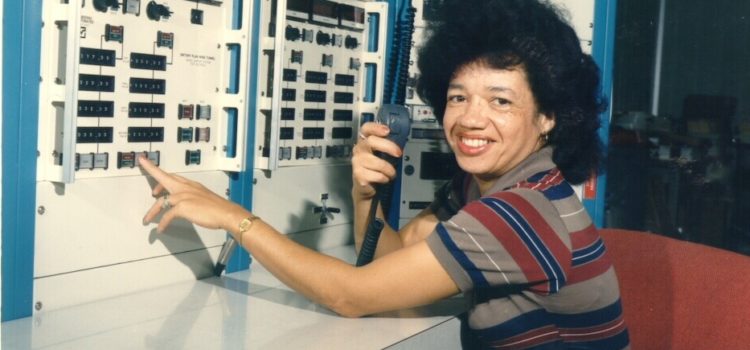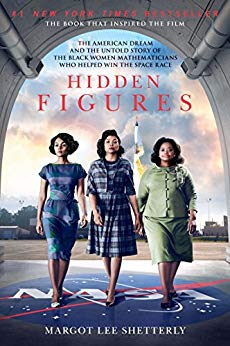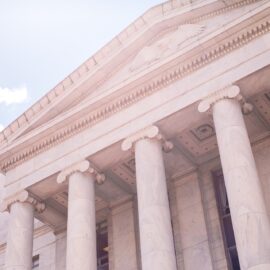

This article is an excerpt from the Shortform summary of "Hidden Figures" by Margot Lee Shetterly. Shortform has the world's best summaries of books you should be reading.
Like this article? Sign up for a free trial here .
Who is Dr. Christine Darden in Hidden Figures? How did Christine Darden fight her way into NASA following in the footsteps of people like Mary Jackson, Katherine Johnson, and Dorothy Vaughan?
Dr. Christine Mann Darden is an American aeronautical engineer. She was a pioneer at NASA as one of the leaders of the Sonic Boom Group.
Dr. Christine Darden’s Hidden Figures role shows that the hard work of the women like Jackson, Johnson, and Vaughan paid off for future generals. Christine Darden’s NASA career was made possible by dismantling segregation, and all the women who worked hard to achieve that goal.
Sputnik: A Call to Action
Christine Darden’s NASA journey began long before she got her first job. On October 5, 1957, the Soviet Union successfully launched the Sputnik satellite into orbit, inaugurating the space race era of the Cold War and sparking a major panic among both American policymakers and the general public.
It was a deeply humbling moment for the West: the Russians had beaten the Americans into space. Had American technology fallen behind that of the Soviets? And if so, what did that mean for the future security of the self-styled “free world?”
Once again, the urgency of the Cold War brought the absurdity of segregation to light. If Sputnik represented a true national crisis, then why were black Americans being denied the opportunity to fully serve their country? The US was leaving untapped the intellectual resources of a large part of its population, in service of a ridiculous and morally indefensible commitment to racial apartheid (while also handing the Soviet Union a major propaganda talking point). While Americans were devoting their energies to keeping black children off high school and college campuses, the Soviets were working vigorously to make sure that all their children received the best possible education. In fact, one-third of Soviet engineering undergraduates were female.
Christine Mann Darden, Future Scientist
One young American who breathlessly followed the progress of Sputnik and the reaction to it was a rising high school senior from North Carolina named Christine Mann (later Darden). While she was fully aware of the racism that defined so much of her experience as an African-American, she still thought of herself as an American—and a patriotic one, at that. Christine Darden’s NASA career proves her mentality on this matter.
Christine Mann Darden had attended The Allen School, widely considered to be one of the finest all-black high schools in the country, with students from as far away as New York. In the eleventh grade, she discovered a passion for mathematics and began to consider a future that would allow her to explore this further. For her and her classmates, the decision in Brown v. Board of Education had been a moment for celebration, but also anxiety: if they were forced to attend school and compete with white students, would they be smart enough to succeed?
Christine Mann Darden had always been fascinated by the idea of space and now saw that the subject had been thrust to the forefront of the national conversation. As a proud American, she didn’t want to let the Soviets dominate the universe beyond the Earth’s orbit, and she was determined to help her country get into space.
After graduating from The Allen School in 1958, Christine Darden matriculated at Hampton Institute, Mary Jackson’s alma mater. She was on her own collision course, destined to meet the black female engineering pioneers at Langley who had come before her and make her own contributions to the “civilian army of the Cold War.”
Sitting In
Christine Darden’s time at Hampton Institute came at an extraordinary time in the struggle for civil rights. While Katherine Johnson was mapping out the trajectory to launch a man into space and bring him back safely, four black college students in Greensboro, North Carolina were making a breakthrough of their own. They sat at the segregated lunch counter at the local Woolworth’s and refused to leave until they were served as equals. Word spread of this powerful display of nonviolent resistance to Jim Crow—soon, “sit-ins” were being staged all across the segregated public spaces of the South.
The struggle reached Christine Darden’s doorstep when Hampton Institute became the first school in Virginia to organize a sit-in. She was drawn to the nascent activist movement and became a committed participant in its marches, protests, and voter registration drives. Despite the massive resistance of Southern whites and the state governments they controlled, the civil rights movement made progress.
In March 1961, President John F. Kennedy issued Executive Order 10925, ordering federal agencies and contractors to take “affirmative action” to ensure equal opportunity regardless of race, creed, color, or national origin. This meant that agencies (like NASA) had to create specific policies and guidelines that rooted out discrimination in their employment practices. President Kennedy had, with the stroke of a pen, put the resources of the federal government on the side of the civil rights movement.
The Legacy of West Computing: Christine Darden’s Future at Nasa
As the years and decades wore on, it became clear that the women of West Computing (which had ceased operations in the late 1950s) had left an indelible mark on NASA, the struggle for African-American civil rights, and the United States itself. Facing down racism and segregation, these women had turned their temporary wartime jobs into permanent and fulfilling careers.
Their years at Langley would be marked by watershed moments in the fight for civil rights—the Brown v. Board of Education decision, the 1963 March on Washington for Jobs and Freedom, and the passage of the Civil Rights Act and the Voting Rights Act. As pioneers, the West Computers had opened the doors for people of color who would follow in their footsteps. Mary Jackson always made a point of welcoming new black employees, helping them find places to live and offering them a home-cooked meal when they were homesick.
She, along with women like Katherine Johnson, created an informal network of older black women who helped new minority employees make the transition to the agency. In doing so, they midwifed the careers of a generation of black engineers and scientists, including Christine Darden.
Dr. Christine Darden, like many other women who worked in science as well as other fields, fought for their place at institutions like NASA. Because the women of NASA built a strong support system, women like Dr. Christine Darden of Hidden Figures found it a more welcoming place than her predecessors.

———End of Preview———
Like what you just read? Read the rest of the world's best summary of Margot Lee Shetterly's "Hidden Figures" at Shortform .
Here's what you'll find in our full Hidden Figures summary :
- How brave black women were instrumental to the American space race
- How they confronted racism and sexism to forge a better future
- Their enduring legacy in American history






